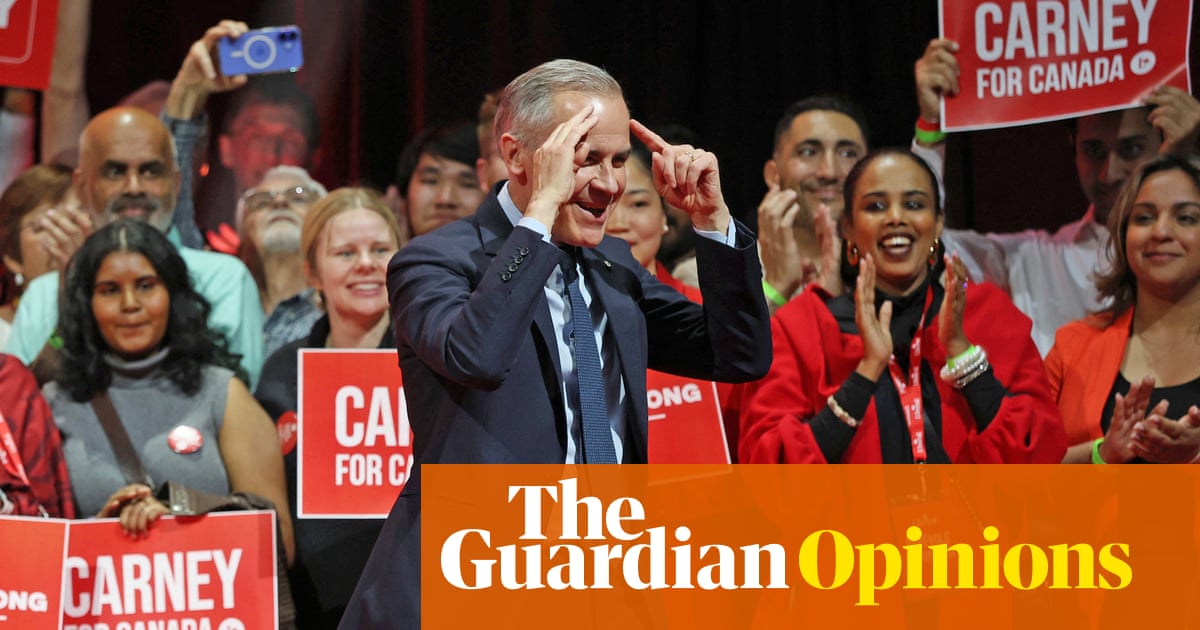Yesterday, as Canadians went to the polls, US president Donald Trump suggested that ifCanada became part of America, they could vote for him instead. But in truth, Canada becoming the 51st state wasn’t a prerequisite for Canadians to vote on Trump. It was Trump who set the stakes of this election anyway, beginning almost as soon as he took office. Histhreats against Canada, both economic and existential, were the backdrop of this campaign. An unexpected crisis on our doorstep.
And now, the Liberal party, led by Mark Carney, has won afourth term in office, a result that would have seemed unthinkable just a few months ago, before Trump’s unprecedented intervention.
Carney placed this issue at the centre of his campaign, painting himself as a reluctant but competent anti-Trump saviour: “If there’s not a crisis, you wouldn’t be seeing me,” he told supporters during the campaign. Which is only true if you ignore that it was a crisis within the Liberal party itself, languishing under former prime minister Justin Trudeau and heading for an electoral abyss, that gave Carney his chance. But political memories are short, and Trudeau almost immediately seemed like a distant one.
For his part, Carney parlayed his central banking experience directly into a message of stoic stability aimed at a nation looking for something solid they could lean on with theirraised elbows. It worked – sort of. His victory wasfar from total, and well below the majority figures that some Liberals had been quietly predicting. Into the early hours today, Carney’s Liberals were pacing toward a minority government, even as they captured more than 40% of the vote share.
As for the Conservative party, Monday’s results are even more of a mixed bag. No other party in recent memory has seen such a drastic reversal of polling fortune as an election got under way.Up by more than 20 pointsnationally months ago, going into Monday, the Conservatives trailed the Liberals by about three. Unbelievable was certainly one way to describe it,though not literallyby questioning polls, as some supporters did.
Amid Monday night’s general chaos of incoming results, the Conservative party leader, Pierre Poilievre, struggled to hold on to his own seat against a Liberal opponent. At the same time, his party actually increased its overall seat count in the House of Commons, and it snagged the party’s highest share of the vote since 2011 – also at around 40%.
All of which means, despite the loss, Poilievre and his message still resonated with a lot of people. “While many have chosen to place your trust in me, trust in the Liberal party, millions of our fellow citizens wanted a different outcome,” Carney acknowledged early Tuesday morning in an address to supporters. It is indeed something Carney must consider as he looks to help shape Canada’s future in the coming months or years.
And plenty of issues beyond the border persist – namely, the cost of living and housing, immigration, the climate crisis, healthcare, grocery and telecommunication oligopolies, the Arctic, public sector efficiency, innovation and productivity. To name a few. It may be that Carney will seek to solve these problems in much the same way his predecessors did. But on Tuesday, Carney hinted at a new approach. “We will need to think big and act bigger,” he said. “We will need to do things previously thought impossible at speeds we haven’t seen in generations.”
Take the rather staid issue of highinterprovincial trade barriers, for one – a wonky pet grievance typically limited to the manifestos of the reformist free marketers that’s gone largely unaddressed for much of the last 30 or 40 years. The problem is that, as part of a federation, Canada’s provincial jurisdictions have long been misaligned on regulations, certifications and licensing. This is partly due to differences in need, but also because of inherent protectionism and competition (freedom of movement and goods sounds great until everyone leaves your province for better jobs or buys stuff from somewhere else).
For generations, Canadians have more or less accepted the inherent janky-ness of the domestic setup because it has worked well in service of our biggest economic market, the US. Not only has it not mattered that provincial economies have been set up in service to the states directly to their south rather than the other provinces to their east or west – it’s been an advantage. Canada may be a nation that runs horizontally across the continent, but its many subsections have been oriented entirely perpendicular to that line.
Since January, reducing interprovincial barriers has suddenly become the policy du jour. People bring it up in conversation. More importantly, provinces are talking about it – publicly – more than ever. And Carney has ambitiously pledged to have the whole thing sortedby 1 July, Canada Day. It’s the kind of thing that would significantly alter the way Canada functions, and it speaks to the question Carney must now help Canadians answer. That is: what might Canada be if we were to define ourselves entirely on our own terms? If Trump is responsible for permanently reorienting anything, it will be this: Canada’s sense of self-determination. Canada may not be “broken”, as Poilievre once declared. Carney’s job now is nothing short of helping Canada ensure that it can’t, or won’t, ever be.
Colin Horgan is a Toronto-based writer and a former speechwriter for Justin Trudeau
